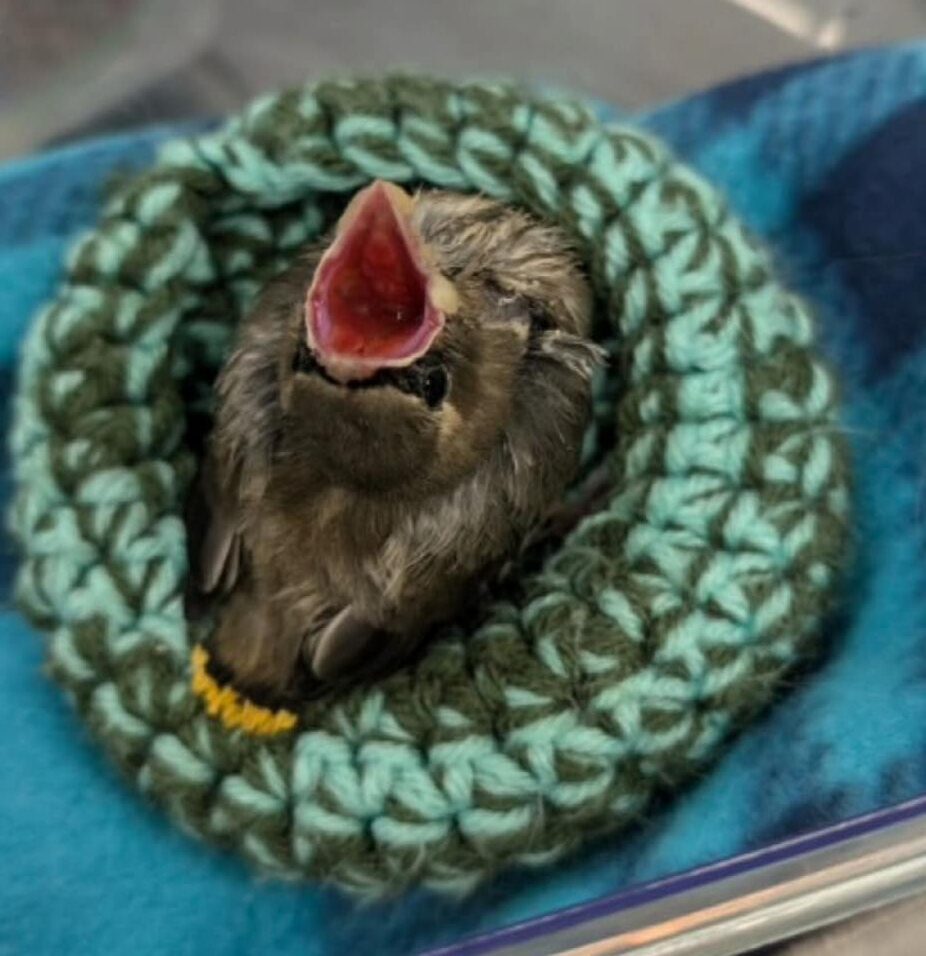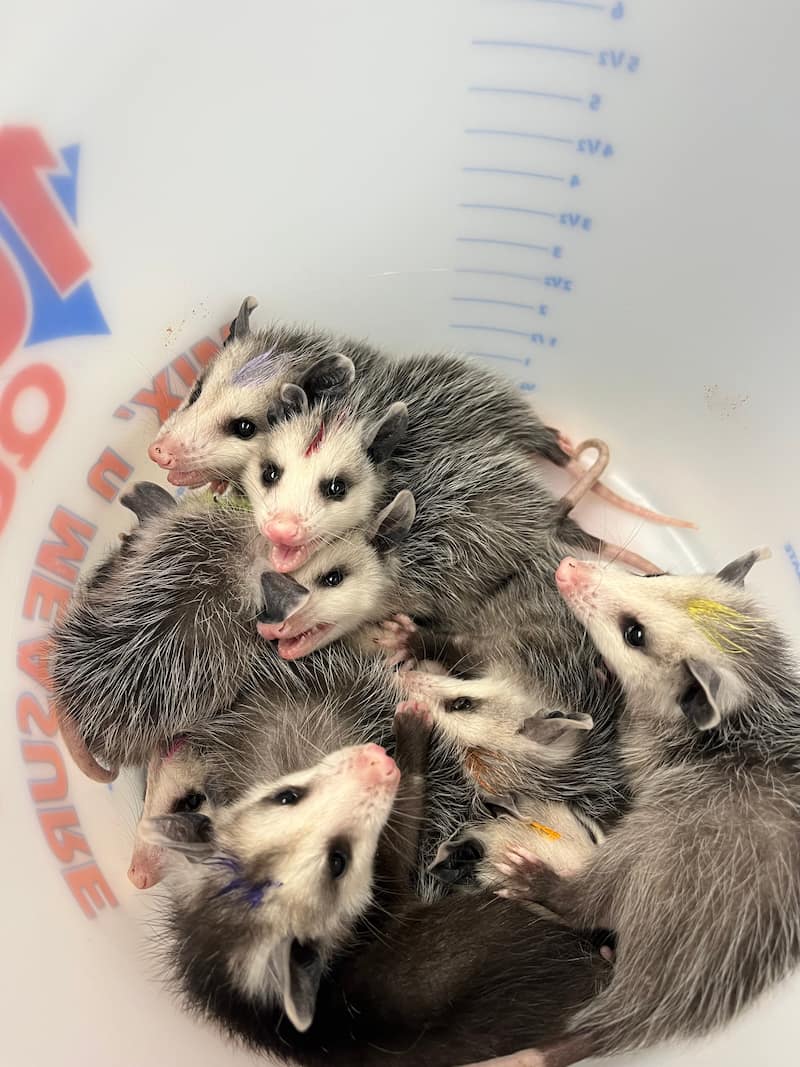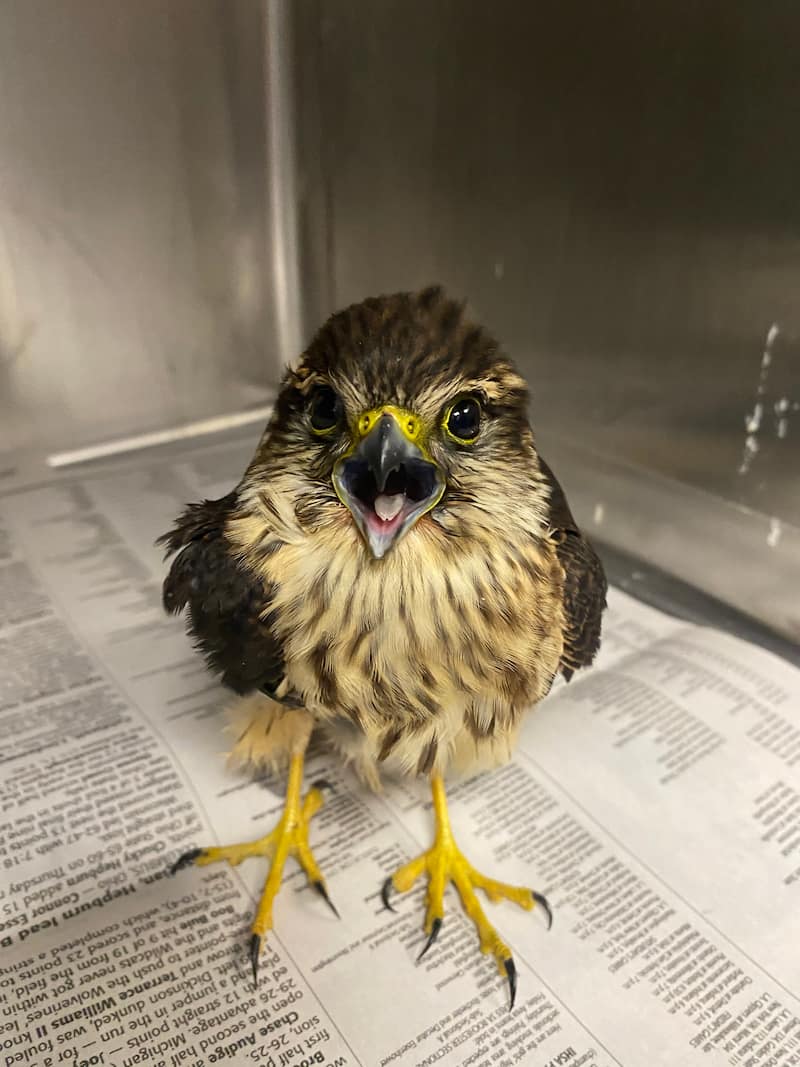By Melissa Giese (class of 2017)
A large bird was found injured on the side of a gravel road in Effingham, Illinois. The bird was not moving much, and didn’t seem to use its wings or legs. Upon a closer look, this bird turned out to be a bald eagle, our country’s national bird.
Initially the bird was found to be dehydrated, had diarrhea, and could not hold himself up. When a wild animal is handled they should be aggressive and try to get away since that is their natural instinct. The eagle did not seem to have the strength to fight during treatments which was very concerning. The eagle was given fluids daily in order to combat the dehydration. Since he would not eat on his own, the team had to force feed food to be sure he was getting appropriate calories each day. It was difficult to tell what was causing these signs but it was suspected that he might have West Nile Virus.
According to the CDC, the West Nile Virus cannot be directly treated and there are no vaccines to prevent infection. Recovery can take several weeks or months and some of the neurological issues can be permanent.
Luckily there is no evidence that people can be infected from affected birds, but raptors can get sick from eating diseased birds. Patients affected must recover on their own, but can be provided supportive treatment such as fluids and pain relievers to help them in their healing process. This was the protocol used by the Wildlife Medical Clinic for this eagle as well.
With just a few days of treatment the eagle began to stand on his own. He became more feisty with the team, showing he was regaining strength. In order to see if the eagle had West Nile Virus, as well as to assess the other organs, a biopsy was completed. The results of these tests were not indicative of anything specific. The liver showed mild inflammation which means that there was an infection going on. The samples were submitted to check for West Nile Virus to confirm that the treatment plan the team was implementing was appropriate. After a few days of processing, it was found that the eagle did in fact have West Nile Virus.
After 12 days of supportive treatment the eagle began eating food on his own. He was gaining strength daily and began exhibiting wild bald eagle behavior such as barking and fluffing his feathers to appear more threatening. Though it was very difficult to treat him due to his increasing aggression, the team was very happy to see him feeling better. Handling was kept to a minimum in order to keep the eagle as stress free as possible.
A little over three weeks into the treatment the eagle was ready to leave the Wildlife Medical Clinic. He was sent to a rehabilitation facility where he was tested for flight capability and hunting capability before finally, being released back into the wild.




